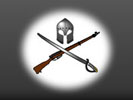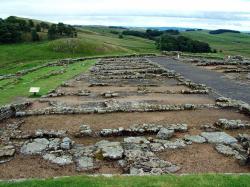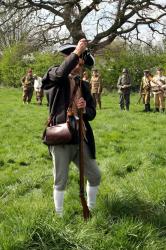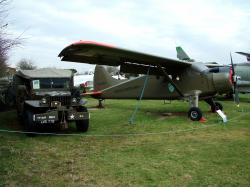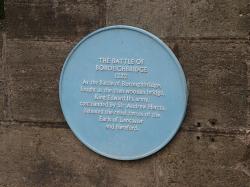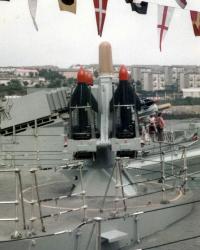Translate this Page
Daiuraadha, The Year of the Airplane
Battle Name : Daiuraadha, The Year of the Airplane
Date(s) : 01 November 1919 - 01 April 1920
Part of : Operations against the "Mad Mullah" ,
Outcome : A victory for British & Imperial Forces over Dervish Forces
Type of battle : Land, Sea, Air
Summary
The final campaign, against Mohamed bin Abdullah Hassan (The Mad Mullah) and his Dervishes, was mounted in great secrecy, taking place in the early months of 1920. This first campaign in which the Royal Air Force took a major part was a truly tri-service effort. Lasting just over three weeks it resulted in the eviction of the Mullah from the Somaliland Protectorate and the disintegration of his Dervish following.
Location
The Sol Haud , and Nogal Valley eastern Somaliland Protectorate
More details
The campaign against the Mad Mullah began in November 1919 and was set up with maximum security. Twelve DH9 aircraft of the RAF were crated and shipped from Egypt to Berbera, Somaliland Protectorate, in the aircraft carrier HMS Ark Royal. The RAF advance party led by the Commander group Capt (Col) Gordon arrived under cover of an oil exploration party and surveyed airstrips at berbera and at Eil Dur Elan on the plateau some 120 miles SE of Berbera. Intelligence and ground support provided by the Somaliland Camel Corps (SCC) had placed the Mullah and his Dervishes at Jid Ali, Meshed and Baranon the escarpment some 200 miles east of Berbera. A half battalion of the 1/101 Grenadiers Indian Army was under command of the SCC and a composite battalion of the 2nd and 6th KAR was made available from Kenya.
HMS Ark Royal offloaded the DH 9s on the 30th December and 8 were prepared for action and flown to Eil Dur Elan by 19th January.
Action commenced on 21 Jan when 6 aircraft delivered the first attack on the Mullahs locations. One aircraft returned to base with a mechanical fault, four attacked a Dervish force at Jid Ali and one found the Mullah’s Haroun (HQ) at Meshed. This last aircraft nearly terminated the campaign with a fortunate bomb that landed close to the Mullah killing some of his companions. Surprise was achieved and the RAF had three days of freedom to operate before the ground forces closed in. The KAR landed at Las Koreh moved on Musa Aled on 21st January and arrived at Baran Fort on 23rd where they were engaged until the Dervish evacuated it on 25th.
Similarly the SCC with 1/101 Grenadiers moved from El Afweina on 23rd to Jidali and Meshed arriving on the 27th and causing the Mullah to evacuate the area on 28th January. The Mullah disappeared into the Sol Haud whilst part of his force collected at Buran he was reported to have moved via Gud Anod and El Afweina to Taleh his great desert fortress. De4rvish columns were bombed and machine gunned from the air on the 27th and 28thand a Force of Tribal levies and Police were placed at Hudin under Capt Gibb to close off an escape westward.
Taleh Fort was bombed on 1-4th February. The Mullah arrived at Taleh after the bombing with the SCC in hot pursuit. E left for Halin on 10th Feb by which time Col Ismay and his mounted force were some 48 hours behind him. The SCC covered 150 miles in 72 hours in their chase and despite several engagements en route the Mullah travelling with a very small party evaded them and eventually moved into the Ethiopian Ogaden. His main Dervish force had either been killed, captured, or scattered in flight, and all his livestock was seized.
A side action to the campaign was the landing of a Naval contingent from HMS Odin and HMS Clio together with a force of Tribal Levies to take the Dervish coastal Fort of Galbaribur after a strike by the RAF on 27 and 28th January.
The First of Lord Trenchards attempts to make the RAF the responsible Arm for the control of Colonial Overseas territories.This proved inadequate without sufficient territorial forces.
The last campaign was one of the least expensive overseas campaigns in financial terms.
